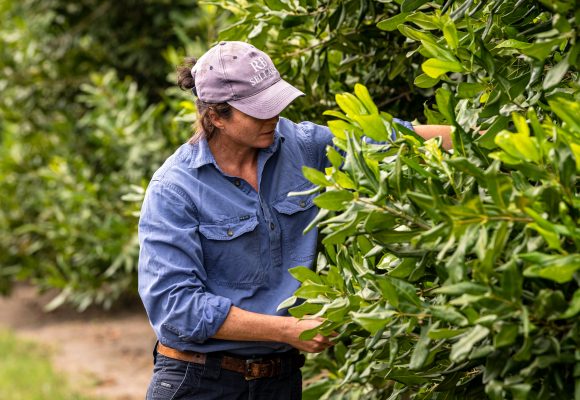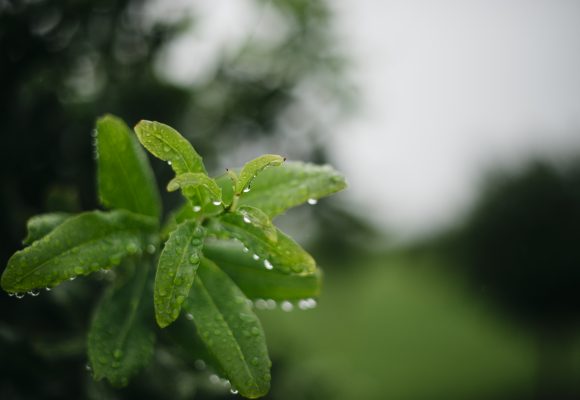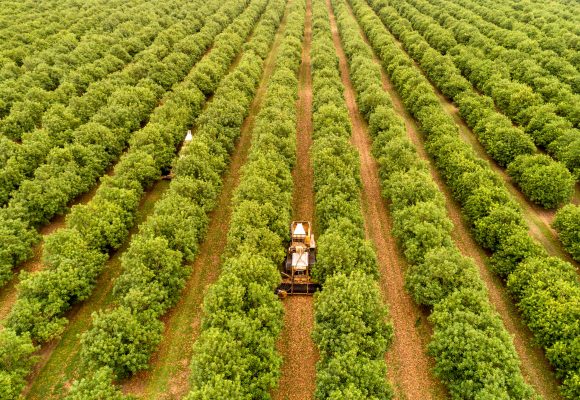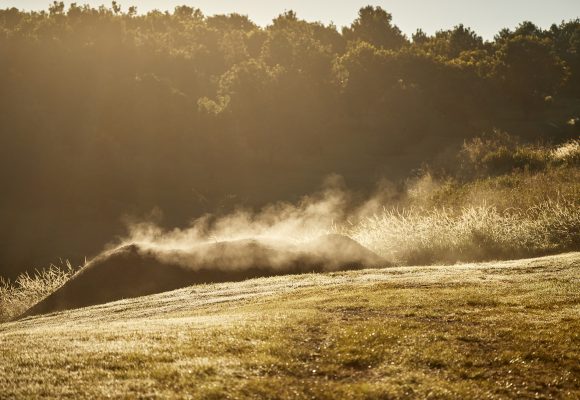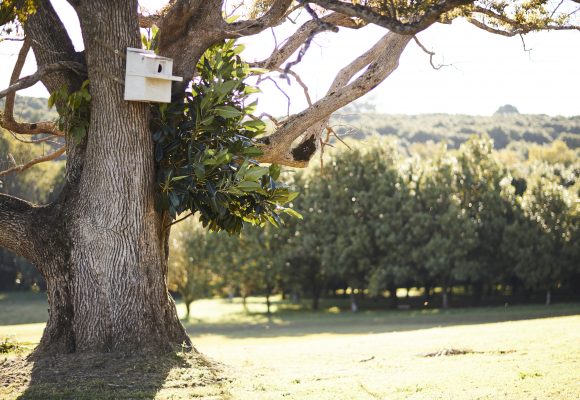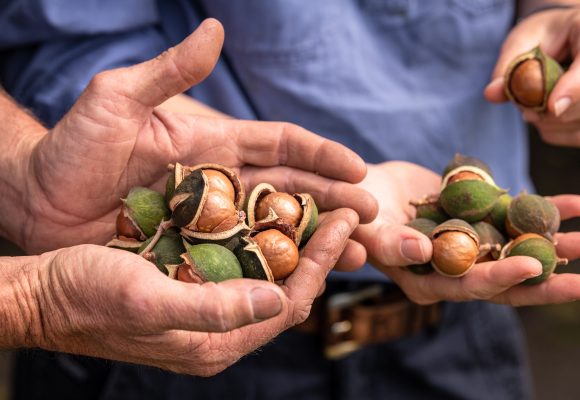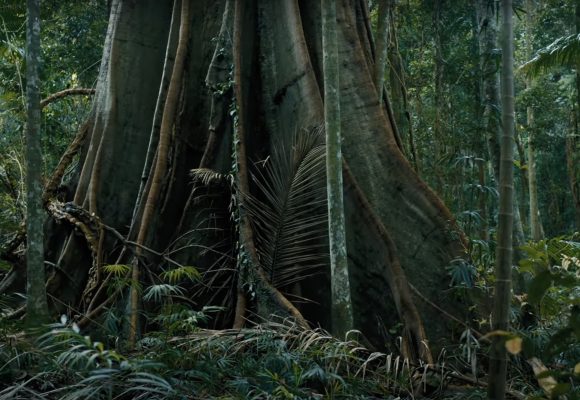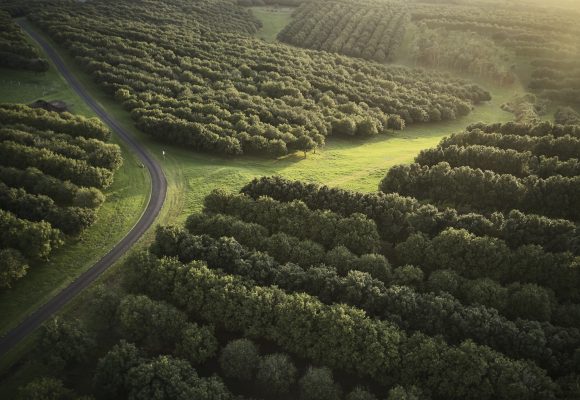A light carbon footprint
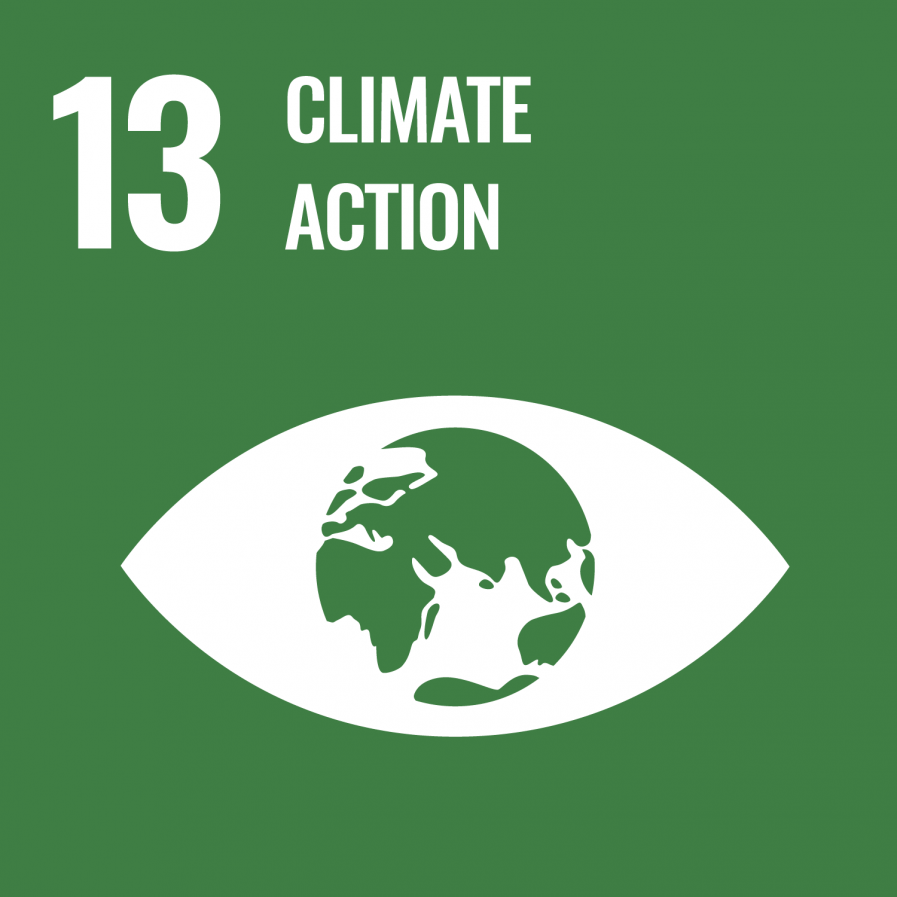
More than just farms, Australian macadamia orchards are thriving forests that benefit the planet while producing one of the world’s most delicious nuts. The macadamia tree’s unique physiology, including its large size, long lifespan and substantial volume of foliage, enables it to hold a significant amount of carbon, more so than other crops.
While the macadamia trees are absorbing carbon, our growers are treading as lightly as possible in the orchard. Our industry limits its carbon output by minimising the use of heavy diesel-consuming machinery and transportation. Human intervention in the orchard is light, and processing facilities are located within major growing regions, ensuring the nuts don’t have to travel far from the tree to be shelled, dried and packed.
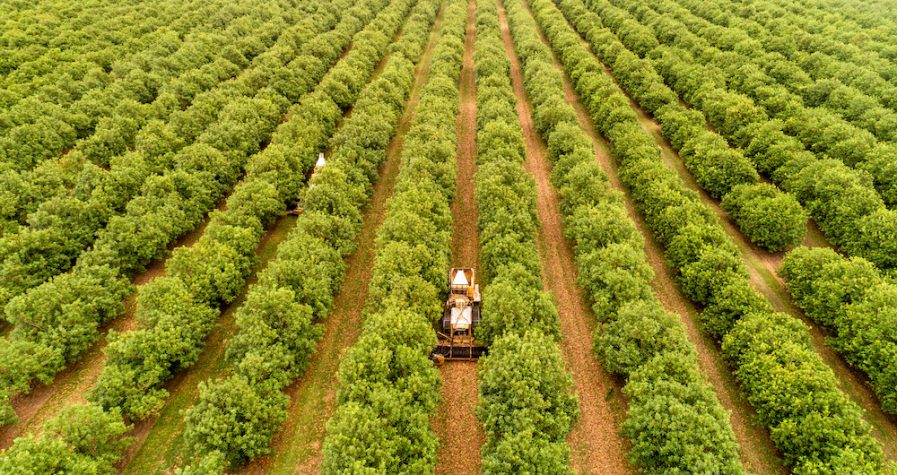
Many of Australia’s macadamia growers use regenerative agricultural practices in their orchards. This not only optimises soil health to ensure the highest quality nuts, but also builds up organic matter in the ground under the trees. This naturally sequesters carbon in the ground, and also reduces waste by reusing macadamia shells, husks and tree prunings.
1 Australian Tree Crop Map, built and maintained by the Applied Agricultural Research Centre at the University of New England 2 Murphy Tim, Graham Jones, Jerry Vanclay, Kevin Glencross; (2013) Agroforest Syst 87:689-698. Preliminary carbon sequestration modelling for the Australian macadamia industry.

